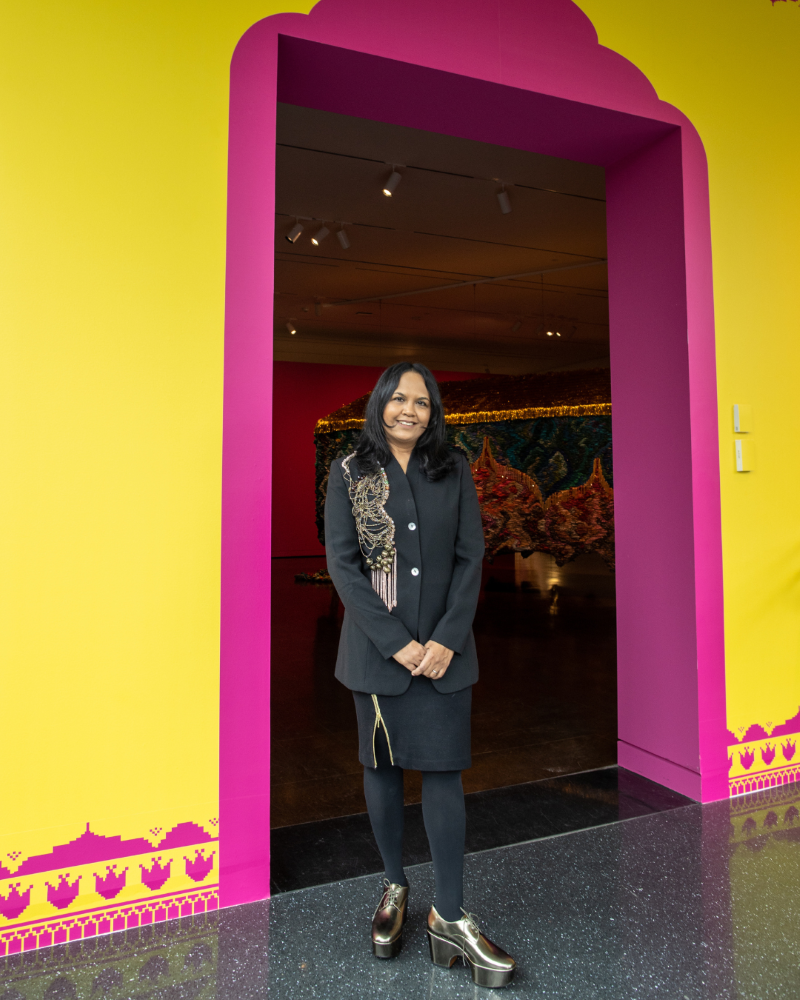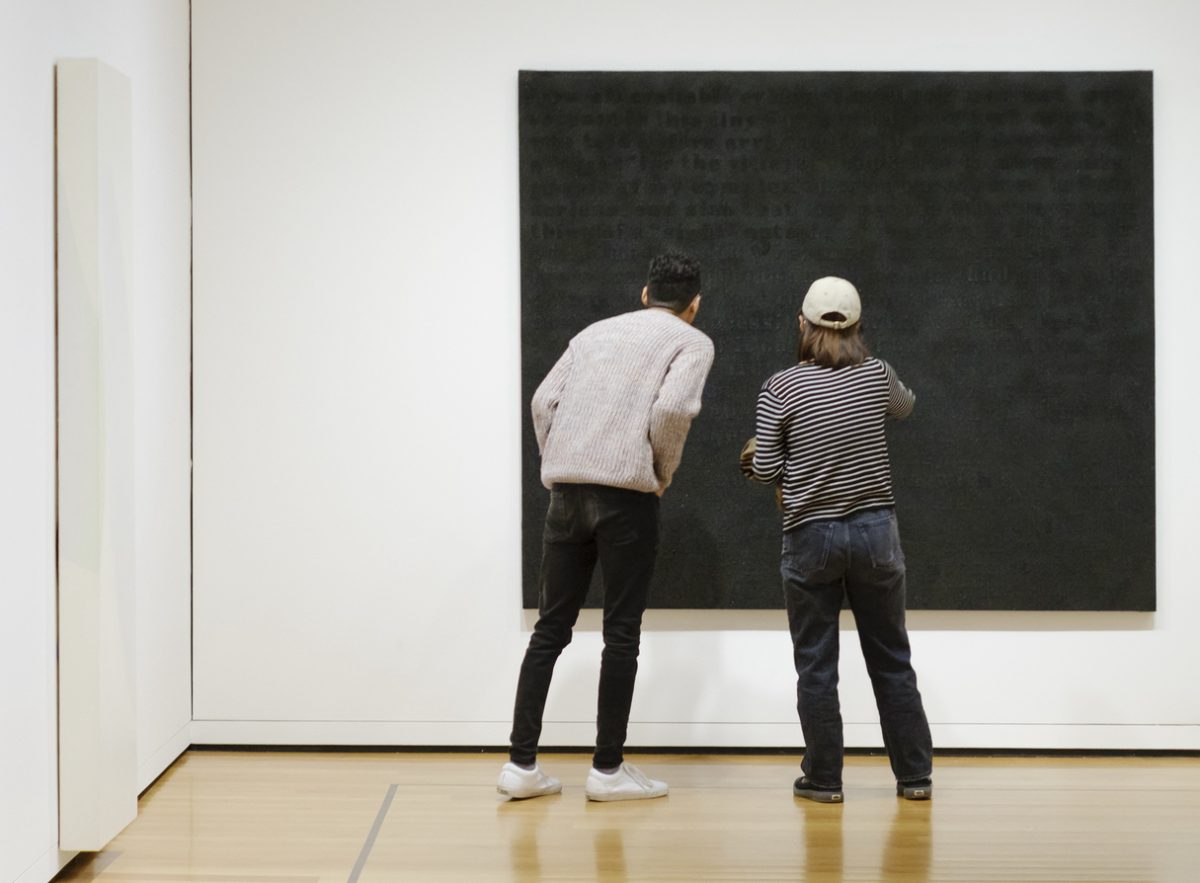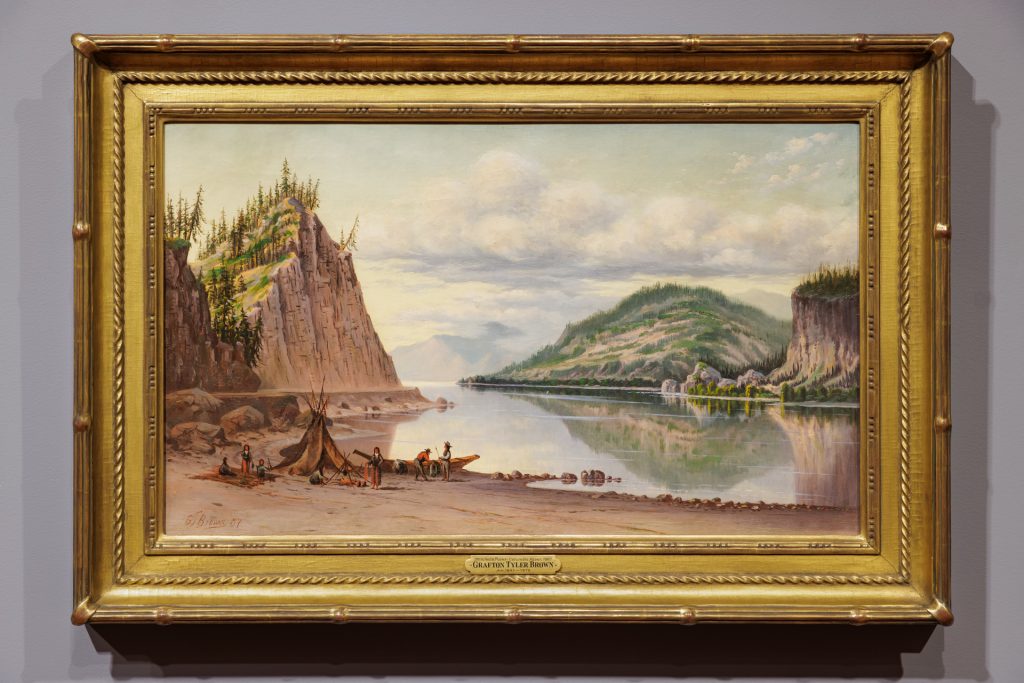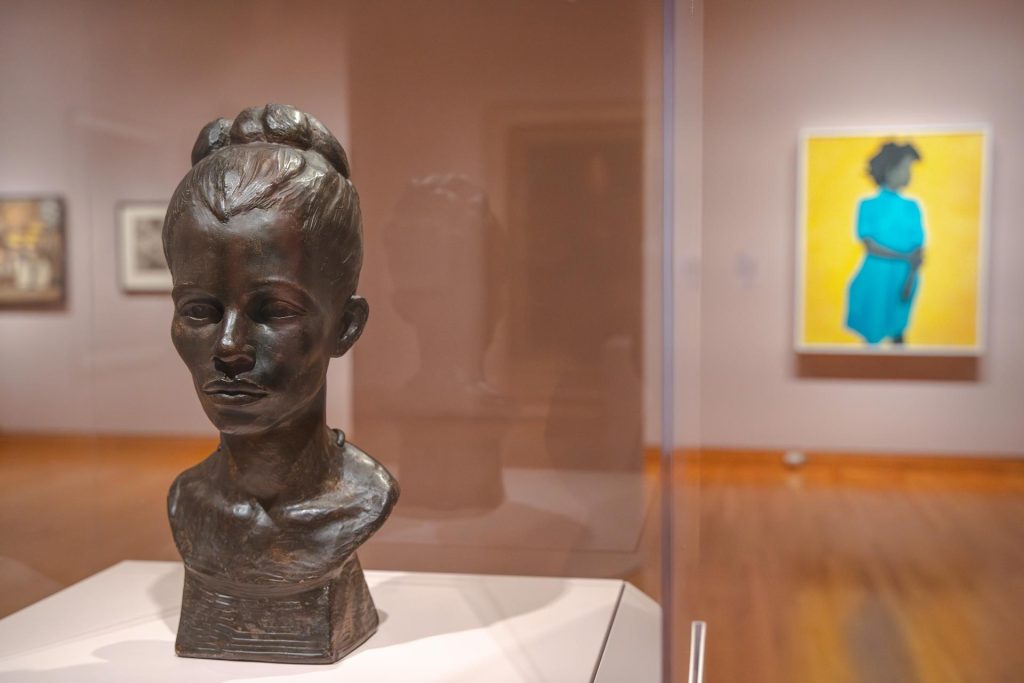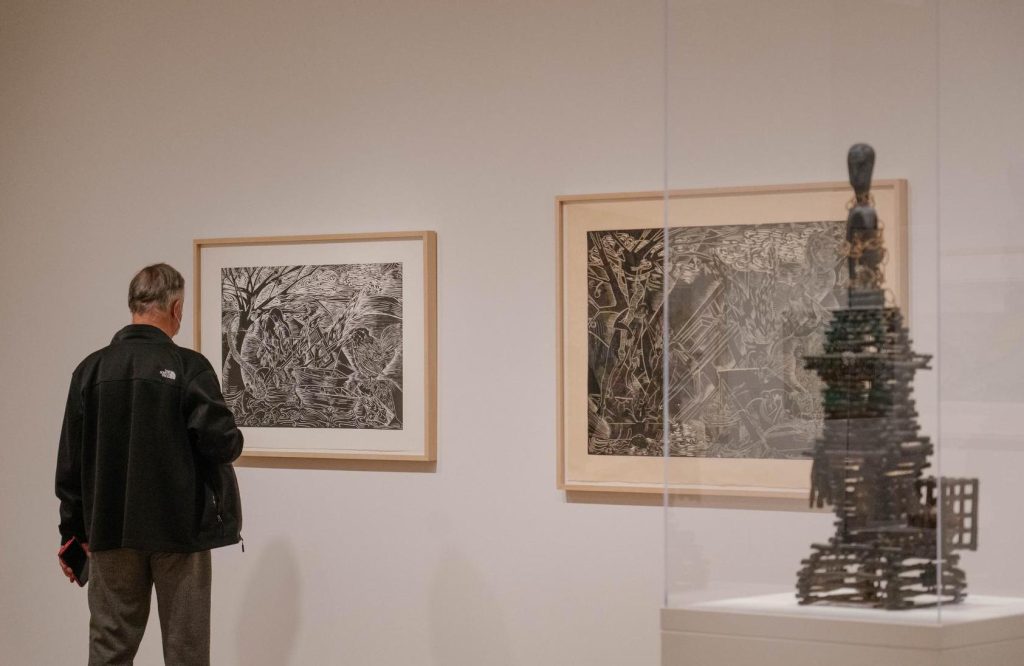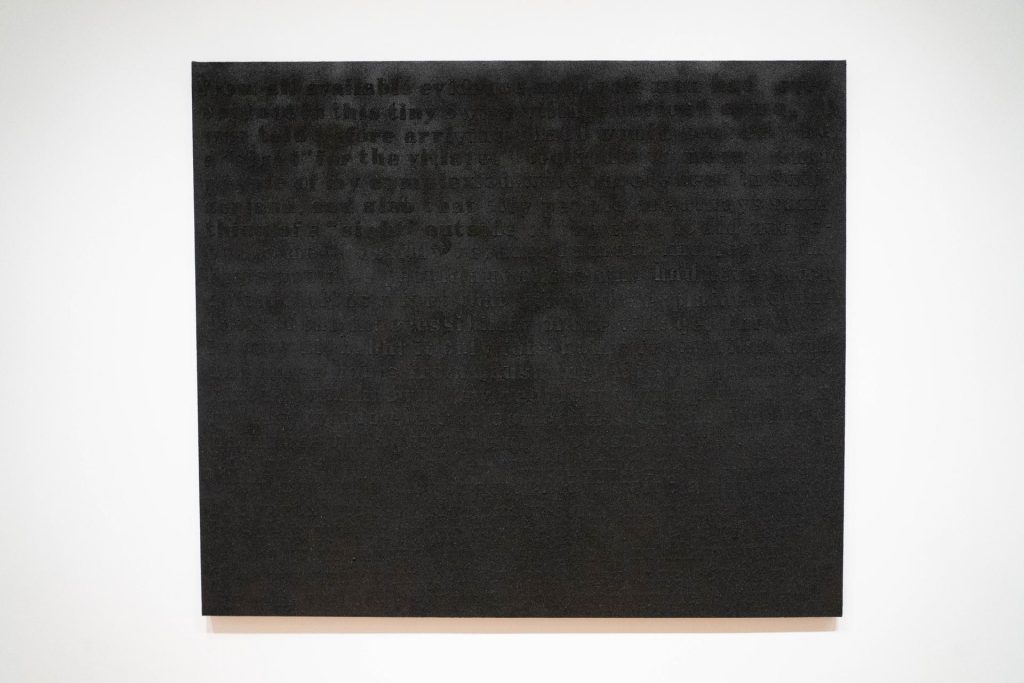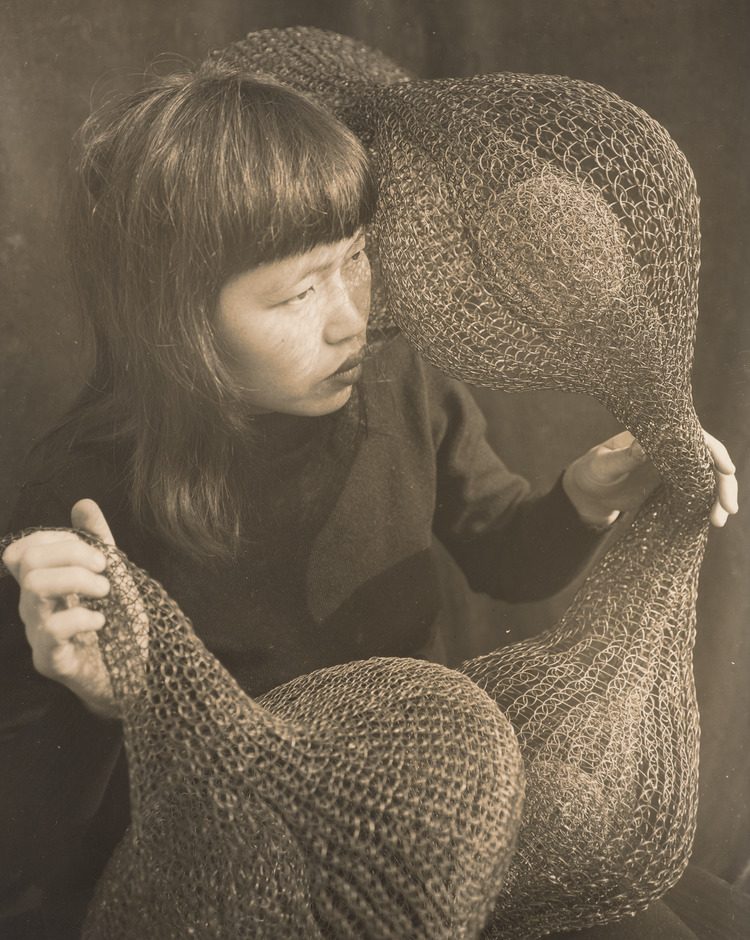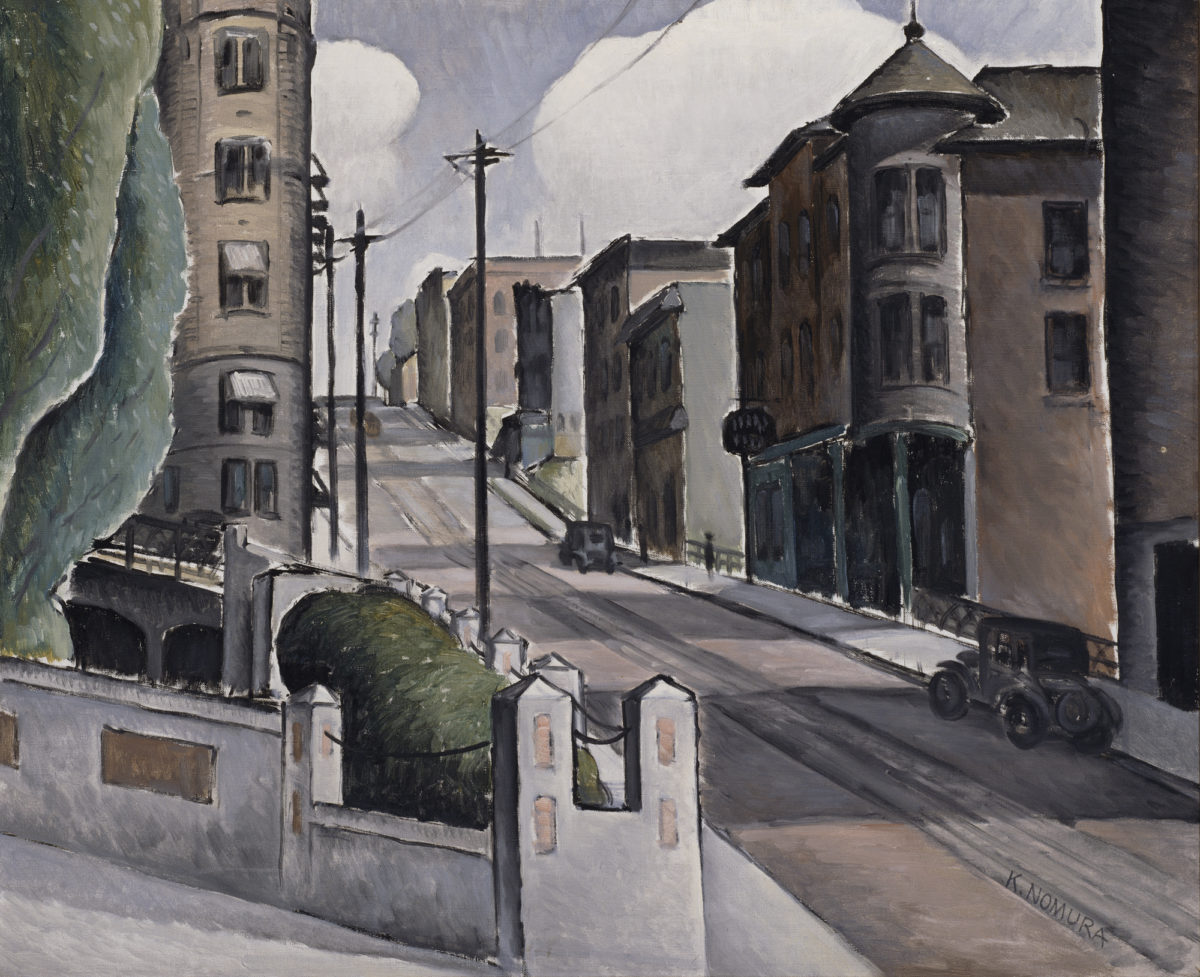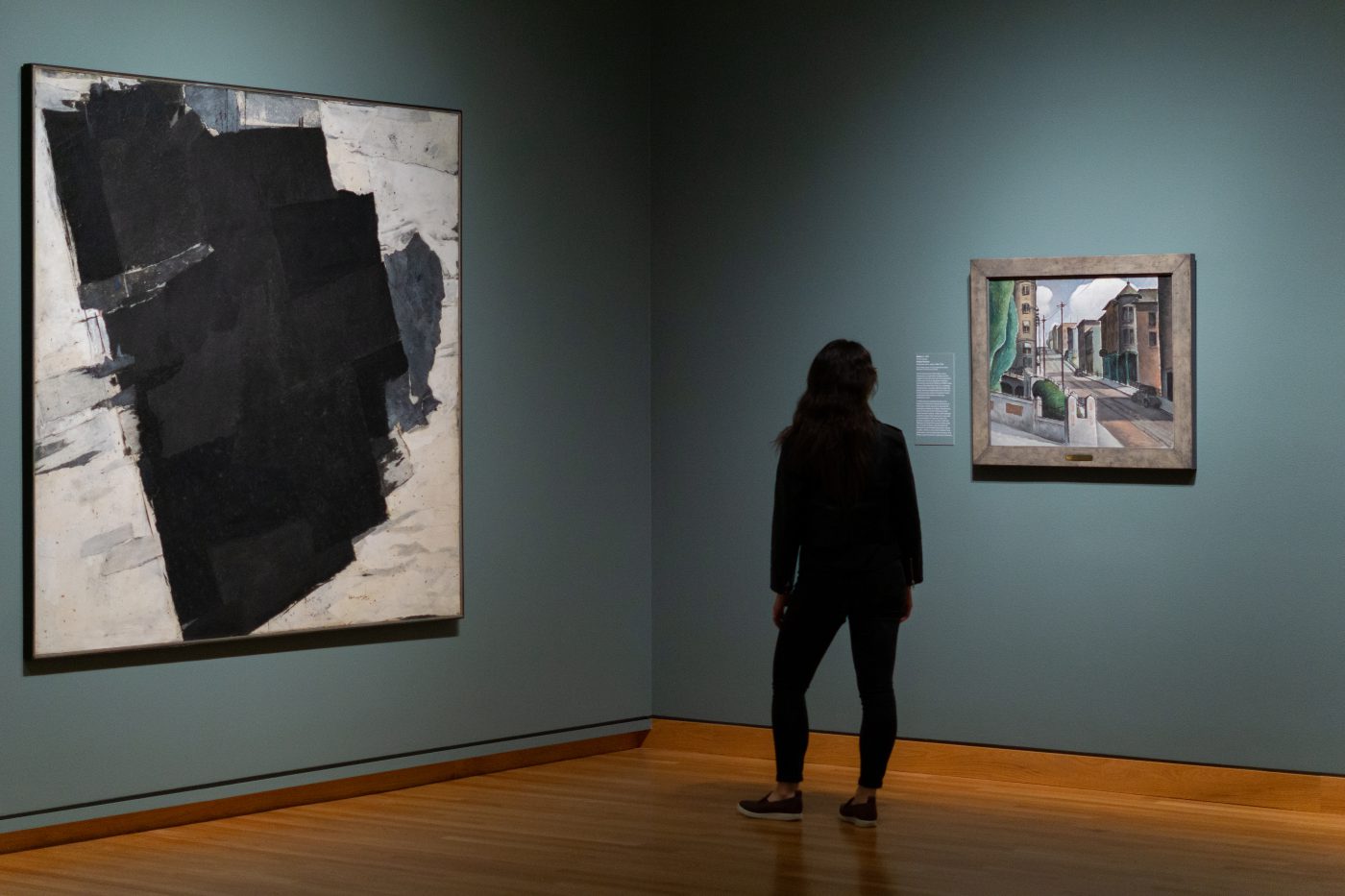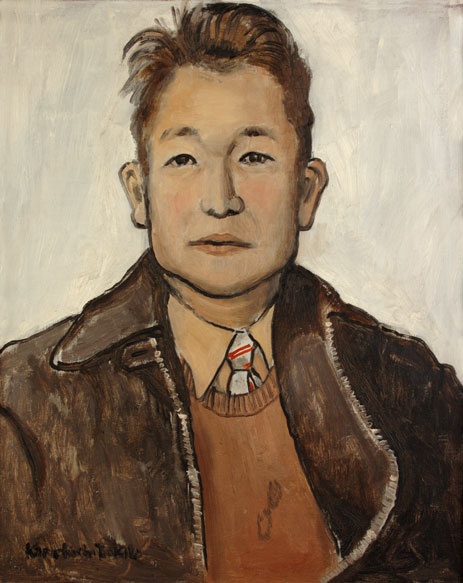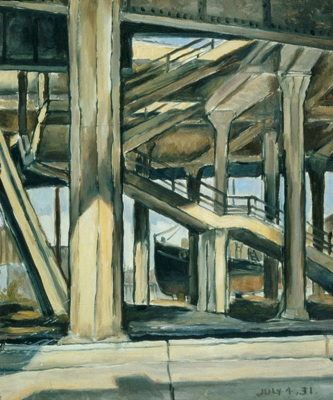AANHPI Heritage Month: Discover the backstory of three artists in our collection
Happy Asian American, Native Hawaiian, and Pacific Islander (AANHPI) Heritage Month! Every May, we take the opportunity to celebrate and reflect on the impact that generations of people from this diverse group have made on our shared history. This year, it’s even more urgent to tell these stories that reflect the diversity of American life, as the current political administration attempts to erase them from our cultural institutions. Here are some stunning works from SAM’s collection created by artists from these communities.
Fay Chong
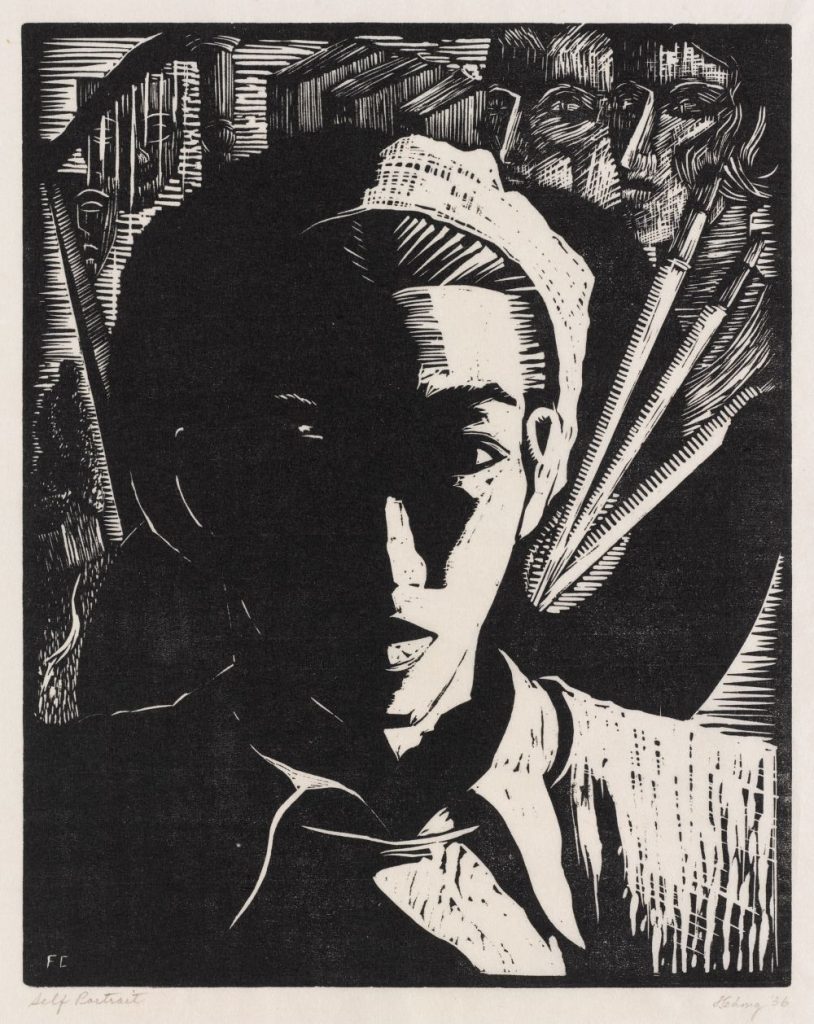
First up is Fay Chong (1912-1973), a Chinese-born artist who moved to Seattle in 1920. In high school, he studied art alongside classmates George Tsutakawa and Morris Graves, who would also become well-known artists in the Pacific Northwest. Though Chong suffered from financial instability in the 1930s, he was still able to learn and grow as an artist during the Great Depression thanks to funding from the Works Progress Administration. During the Great Depression, this government agency provided jobs in many different fields, including for artists, writers, actors, and dancers. Chong was paid to create a certain number of artworks in a month, including black and white linocut prints like these.
In his block print “Self-Portrait” (1936), Chong surrounds himself with symbols of the arts—a harp, drama masks, books, and paintbrushes—and looks back at the viewer with a serious expression. He seems to be positioning himself as a rising figure in the arts community, claiming this identity even as a young man of 24.
Another piece from this period, “Marine Hospital” (1938), depicts a building in Beacon Hill that still stands today, now as Seattle College’s Pacific Tower. Rather than focus on its decorative details, Chong honed in on the structure’s unique silhouette. He used various hatching techniques to contrast the black facade of the building, creating different qualities of light and forming a mysterious glow against the dark background.
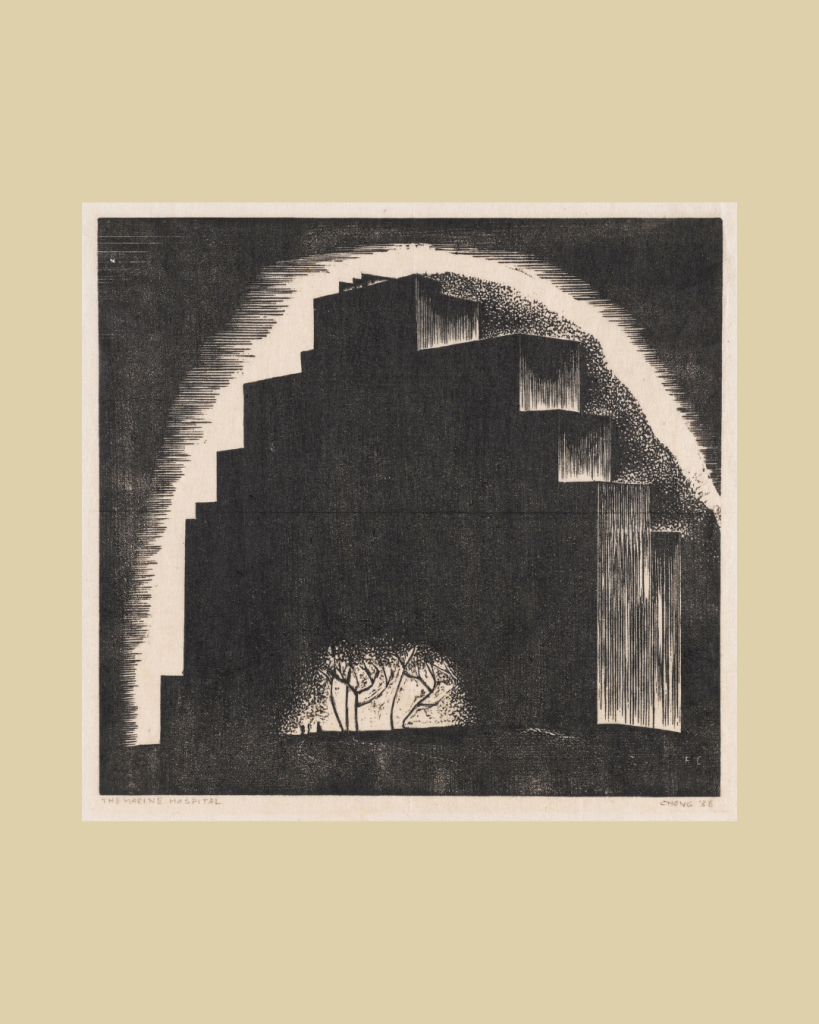
Chong may have been familiar with this place due to his friendship with local artists Kenneth Callahan and Julius Twohy. Government programs commissioned Callahan and Twohy to paint murals inside the hospital in the 1930s. (Fun fact: Twohy painted the watercolor sketch “To My Friend Fay Chong” as an homage to Chong; this piece is also in SAM’s collection.)
Though Chong sometimes used traditional calligraphy and brush painting that reflected his cultural background as a Chinese immigrant, he also made works like these block prints that emphasize his training in the US and the impact of modern, Western design. He was influenced by his fellow artists in the Northwest, and these artists also began to incorporate Asian techniques into their work. Chong found a sense of belonging as an artist in Seattle. Throughout his life, he participated in several artist groups, including a Chinese Art Club he co-founded, as well as more established museum spaces. In 1942, the Seattle Art Museum recognized Chong’s work with a solo exhibition. Nine of his works now live in SAM’s permanent collection.
Kenjiro Nomura
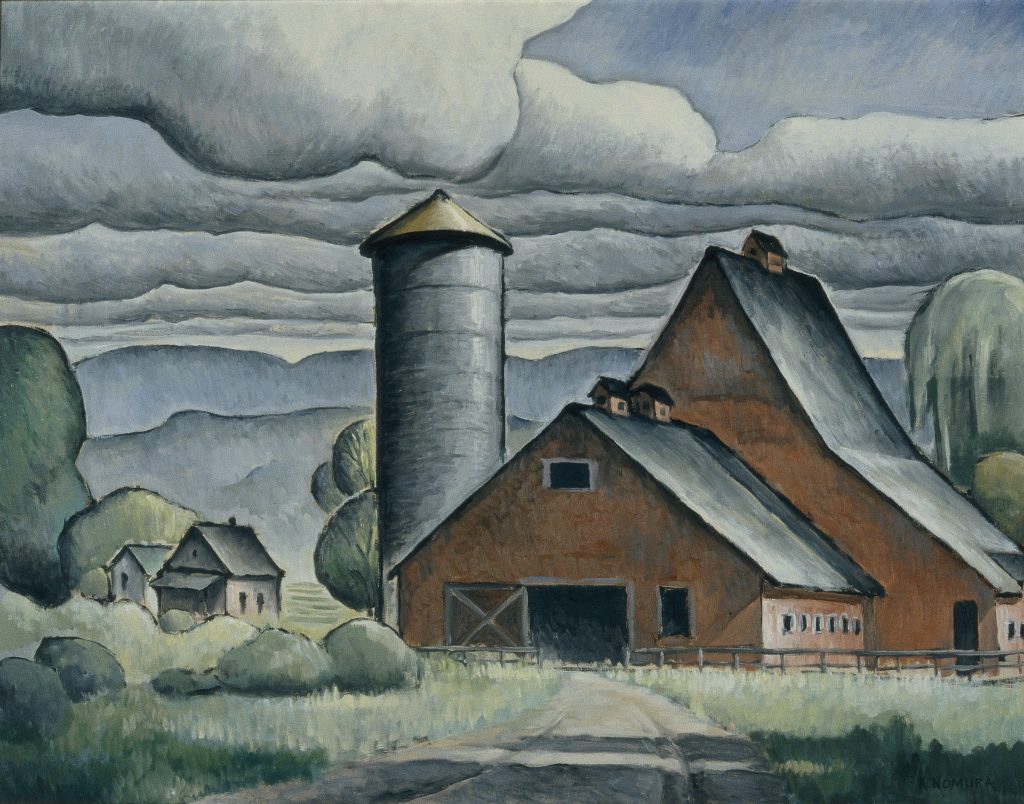
Painter Kenjiro Nomura (1896–1956) is an integral part of the Seattle Art Museum’s history—when we opened our original location in 1933, SAM’s debut solo exhibition showcased Nomura’s work.
Born in Gifu, Japan, Nomura immigrated to the US as a young boy. Though his parents returned to Japan five years later, Nomura stayed in his adopted hometown of Tacoma, Washington. Soon after, he moved to the International District in Seattle; there, he became an apprentice sign painter and began taking art lessons.
Nomura’s American realist style of landscape painting captured streetscapes, working waterfront, and rural scenes. His unique approach blended Western and Eastern art methods, drawing on the color, composition, and line conventions characteristic of Japanese paintings.

Nomura’s painting “Street” (1932) depicts the busy intersection of Fourth Avenue and Yesler Way, which was once the heart of the Japanese American community in Seattle. In this neighborhood, he teamed up with Kamekichi Tokita—a fellow painter of Japanese descent—to establish Noto Sign Co., a signage manufacturer and community space for local artists. Contrasting his life in the city is the 1933 piece “Red Barns,” traveling outside of Seattle to highlight the farmlands of western Washington.
After tragic events of the 1930s and 1940s—including the closure of Noto Sign Co. due to financial troubles and he and his family’s forced relocation to a concentration camp during WWII—Nomura resumed his practice in 1947; these later works include two in SAM’s collection (both untitled). In 2011, Nomura and Tokita’s work was featured side-by-side in an exhibition at SAM.
Suchitra Mattai
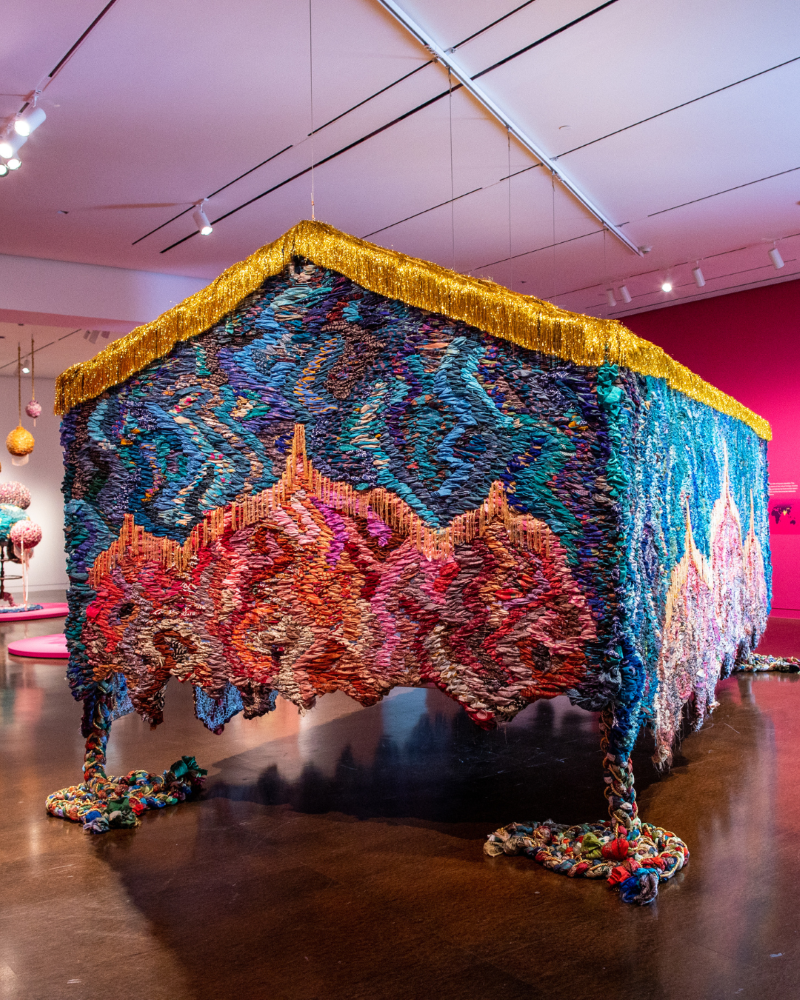
Known for her mesmerizing mixed media artworks, Indo-Caribbean artist Suchitra Mattai uses vintage saris, embroidery, and storytelling to honor her ancestors and reimagine memory. Her solo exhibition she walked in reverse and found her songs is now on view at the Seattle Asian Art Museum!
Born in Georgetown, Guyana, Mattai moved to Canada as a young child. She was deeply influenced by the history of her ancestors, who were forcibly relocated from India to the Caribbean to work as indentured laborers on sugar plantations.
Her grandparents played a central role in both her life and art. One of her pieces “Pappy’s House” (2024) reimagines their home in Guyana by braiding together vintage saris to construct a large-scale structure. Primarily sourced from India, these saris are also collected with the help of her mother, who receives them from friends and sari drives in New Jersey.
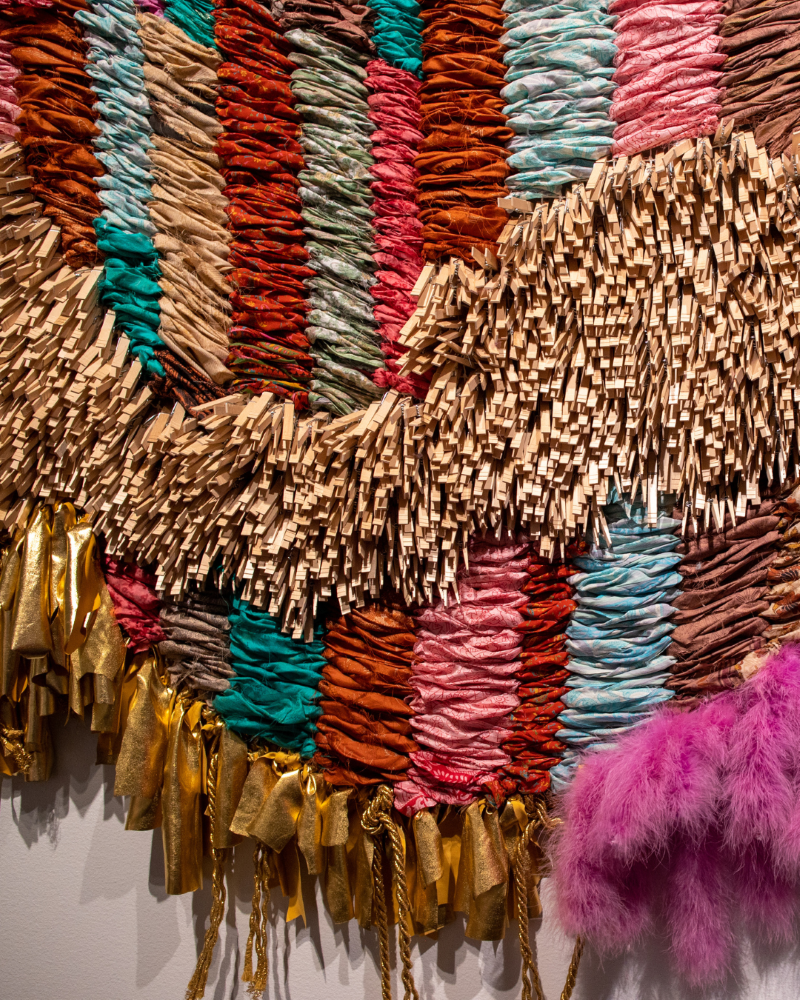
Mattai’s work is committed to honoring the generations of women who came before her. Growing up, she learned sewing, embroidery, and crocheting from her grandmothers. By using these techniques in her practice, she challenges the idea that craft is inferior to art. She also honors the women of her South Asian heritage by stitching brown heroines on found embroideries.
Mattai is an alum of University of Pennsylvania, Philadelphia, where she earned an MFA in painting and drawing and a MA in South Asian Art. Now based in Los Angeles, Mattai’s work has appeared in group and solo exhibitions all over the country. She is also the recipient of the 2023 Smithsonian Artist Research Fellowship.
– Sara Butler, Marketing Copywriter, and Nicole Block, Collections Associate
Image credits:
Self-Portrait, 1936, Fay Chong, American, 1912-1973, Ink on thin Japan paper, Comp.: 10 x 8 in. (25.4 x 20.3 cm), Sheet: 13 1/4 x 9 5/8in. (33.6 x 24.5 cm), Seattle Art Museum, PONCHO, 84.173, ©️ Fay Chong Jr., Photo: Elizabeth Mann.]
The Marine Hospital, 1938, Fay Chong, American, 1912-1973, Ink on thin Japan paper, Comp. h.: 16.8 cm, Comp. w.: 18 cm, Sheet h.: 20 cm, Seattle Art Museum, PONCHO, 84.172, ©️ Fay Chong Jr., Photo: Elizabeth Mann.
Street, ca. 1932, Kenjiro Nomura, American (born in Japan), 1896-1956, Oil on canvas, 23 3/4 x 28 3/4 in., Seattle Art Museum, Gift of West Seattle Art Club, Katherine B. Baker Memorial Purchase Award, 33.225, ©️ Kenjiro Nomura, Photo: Paul Macapia.
Red Barns, 1933, Kenjiro Nomura, 1896-1956, Oil on canvas, 28 x 36 in. (71.1 x 91.4 cm), Seattle Art Museum, Eugene Fuller Memorial Collection, 33.224, ©️ Kenjiro Nomura, Photo: Scott Leen.
Suchitra Mattai: she walked in reverse and found their songs at Seattle Asian Art Museum, 2025, Photos by Natali Wiseman.
